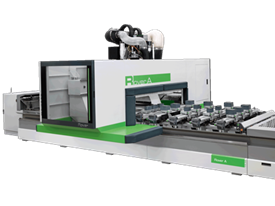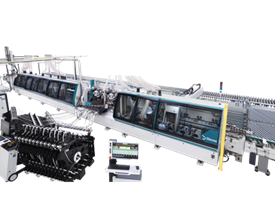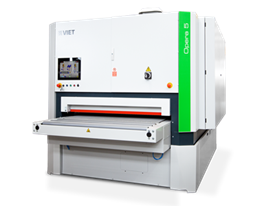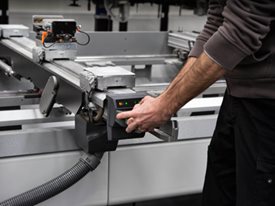Time is money, as the saying goes. It makes sense that the more output you can squeeze out over some time, the more money you'll make. However, there are various things you can do to enhance output without compromising quality, from removing obstacles to restructuring the way you operate, whether you've been struggling to improve production or even if everything is going well.
We have listed 7 methods by industry experts on how to increase productivity in manufacturing and become more productive.
How to Increase Productivity in Manufacturing?
1) Examine your current workflow
If you don't understand how things are currently working, you won't know what can be changed. Important data can be found in three places to assist you to decide what needs to change.
Features to highlight:
- People - Do you have the right people in the right positions, with the correct skills? Do you have a project manager to ensure that the crucial path is clear and on the course? Are the objectives definite, reasonable, and secure?
- Processes - When was the last time you mapped out your business processes? Have you evaluated process improvement efforts using value stream mapping? Where are the bottlenecks and pain points?
- Technology and equipment - Are all of your tools in good working order? Is the technology you use best suited to meet your needs right now? How simple is it to alter production?
Learn how things currently work before making any modifications. The adage "If it ain't broke, don't change it" still has merit. Consider the worth of the anticipated result carefully before making a change unless you can provide a justifiable financial or safety justification
2) Process and technology updates
Start identifying places where procedures and/or technology could use some updating or modifying once you have evaluated and laid out your current workflow. Long-standing procedures could be rife with workarounds as a result of the addition of new machinery or modifications to manufacturing techniques.
-
Automation is an effective strategy for boosting productivity and lowering error.
-
New software solutions can provide aid to inventory management, process monitoring, and scheduling
-
Equipment upgrades can boost output volume and quality.
Consider the total cost of ownership and how it will impact the bottom line when choosing new technology and equipment. If the total cost of ownership is less than the technology or method you are replacing and if it addresses an issue like freeing up a production bottleneck or lowering scrap, then a high initial cost is worthwhile.
3) Put employee training first
Your team is a wonderful location to begin learning how to increase production efficiency. The effective coordination of people and processes is the key to efficiency.
As a result, a key component of any productivity strategy should include personnel training. Prioritise regular safety training, but also keep more thorough training logs.
Other strategies for raising staff effectiveness include:
-
Establish unique plans for each employee to monitor their development throughout the time
-
Ensure specialised training for staff members on new equipment.
-
Provide industry information and online learning materials for staff members so they may learn on their own. By doing this, you can create a workforce that is knowledgeable, effective, and able to solve problems.
4) Stick to the Maintenance Schedule
By putting off routine maintenance, everything might be slowed down as quickly as possible. Downtime due to maintenance is significantly less expensive than downtime from damaged or worn-out equipment. While repairs can be planned, failures always occur when least expected. To speed up production process follow these measures:
-
Instruct all operators in routine maintenance and problem-solving techniques.
-
Set regular dates for preventive maintenance.
-
Utilise data from the floor and your workflow procedures to determine the ideal time for maintenance.
-
Do not postpone maintenance.
-
By performing preventive maintenance, you can make sure that your equipment keeps operating without unplanned downtime or work interruptions.
5) Set the Workspace in Order
Time is saved by minimising mobility and clutter.
-
For maximum task efficiency, minimise moving.
-
Make the best possible tool and material layout for the task or procedure.
-
Clear the workstation of any extra or unused tools and materials.
-
Reduce the time it takes to find materials, records, and equipment by organising your storage.
-
Design the factory floor to be as efficient as possible.
Wherever possible, shorten travel distances. Is there a way to move a product more quickly and safely to the following phase in the process when it needs to be transferred from one machine to another? Can the product be oriented? Is there software that could make scheduling better?
Excessive movement is an indication of disorganised work and can take a long time to produce.
6) Maintain optimum stock levels
If you have an excess of inventory, you'll need somewhere to put it while hoping to use it all. A work stoppage could occur while you wait for more goods if you have too little. If you use lean manufacturing practices, such as the previously stated Kanban technique, optimising inventory is very crucial.
-
Utilise software to keep track of inventories and to send out alerts when there are shortages. You might be able to provide suppliers direct access to your inventory counts so they can automatically order what's required.
-
To ensure accountability for the quality of the parts and the timeliness of deliveries, establish favoured vendor relationships.
-
Make assumptions about the effects of certain shortages and implement procedures to reduce production delays.
To make changes with the vendor or discover a new one, keep track of rejection rates, deteriorating quality, and late delivery. Ask for assurances and guarantees that your deliveries will continue as usual if you are aware that one of your vendors is going through a significant change, such as being sold to a different business.
7) Data Monitoring
The majority of manufacturing businesses have all the information required to design effective workflows. They can't coordinate this data, which is the issue.
Another area where a strong ERP can be beneficial is in this. ERPs are created to offer a single, consolidated platform for all corporate data as a business intelligence tool.
Naturally, this makes the data simpler to use for internal team management, inventory optimization, quality control, report preparation, and other industrial processes. Make sure your ERP generally provides the capability to obtain and use this data.
Conclusion
The aforementioned recommendations are the best practices on how to increase productivity in manufacturing. These manufacturing techniques ought to address most of the traditional suspects that tend to reduce manufacturing efficiency, but keep in mind that people and processes must work in unison.



.png)





 Worldwide
Worldwide
 Italia
Italia
 United Kingdom
United Kingdom
 Россия
Россия
 France
France
 中国
中国
 Asia
Asia
 Deutschland
Deutschland
 España
España
 Schweiz
Schweiz
 North America
North America
 India
India
 Australia & New Zealand
Australia & New Zealand
 Türkiye Cumhuriyeti
Türkiye Cumhuriyeti
 Middle East
Middle East
 Brasil
Brasil